When it comes to adding a new dog to your life—or your current pack—compatibility matters. While some breeds are known for their highly social nature and others for their wariness around fellow canines, there’s a wide middle ground. Many breeds fall into the category of being moderately good with other dogs—they can get along well with the right socialization and environment but may not be instant best friends with every pup they meet.
Choosing one of these breeds is a great option for families who already own pets or want the flexibility of visiting dog parks or hosting doggy playdates. These dogs typically display a balanced personality: not too dominant, not overly shy, and capable of reading other dogs’ cues with reasonable success. Still, proper training and supervision are key.
Let’s explore seven wonderful dog breeds that fall into this “moderately good with other dogs” category. With the right upbringing, environment, and introductions, these dogs can thrive alongside canine companions while still enjoying time with their humans.
Moderately Good With Other Dogs
1. Staffordshire Bull Terrier
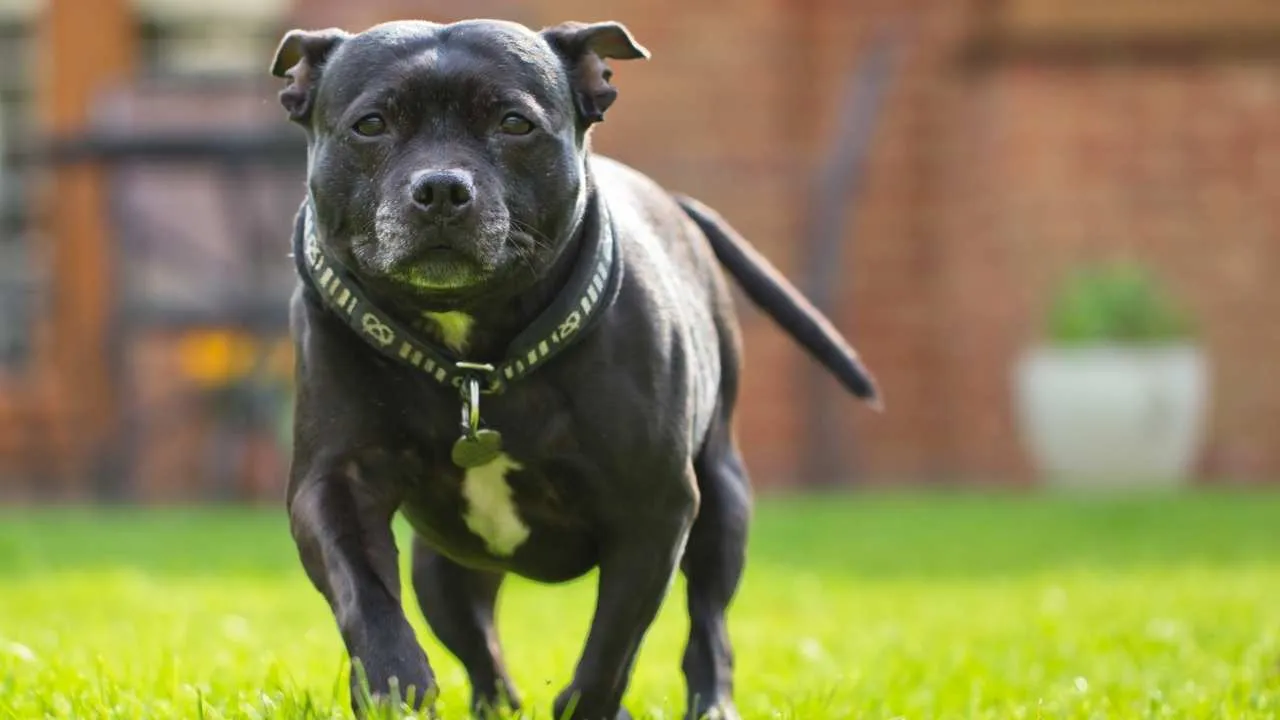
The Staffordshire Bull Terrier is a breed packed with personality and heart. According to the AKC, originally bred for bull-baiting and later for companionship, today’s Staffy is known for its deep loyalty and affection for people. When it comes to other dogs, however, their tolerance depends heavily on socialization and training from an early age.
While they can be playful and tolerant, Staffordshire Bull Terriers often exhibit a strong-willed streak and may not back down if challenged. They do best with stable, predictable canine friends and are usually more compatible with opposite-sex dogs. In many cases, their behavior with other dogs mirrors their owner’s approach to training and reinforcement.
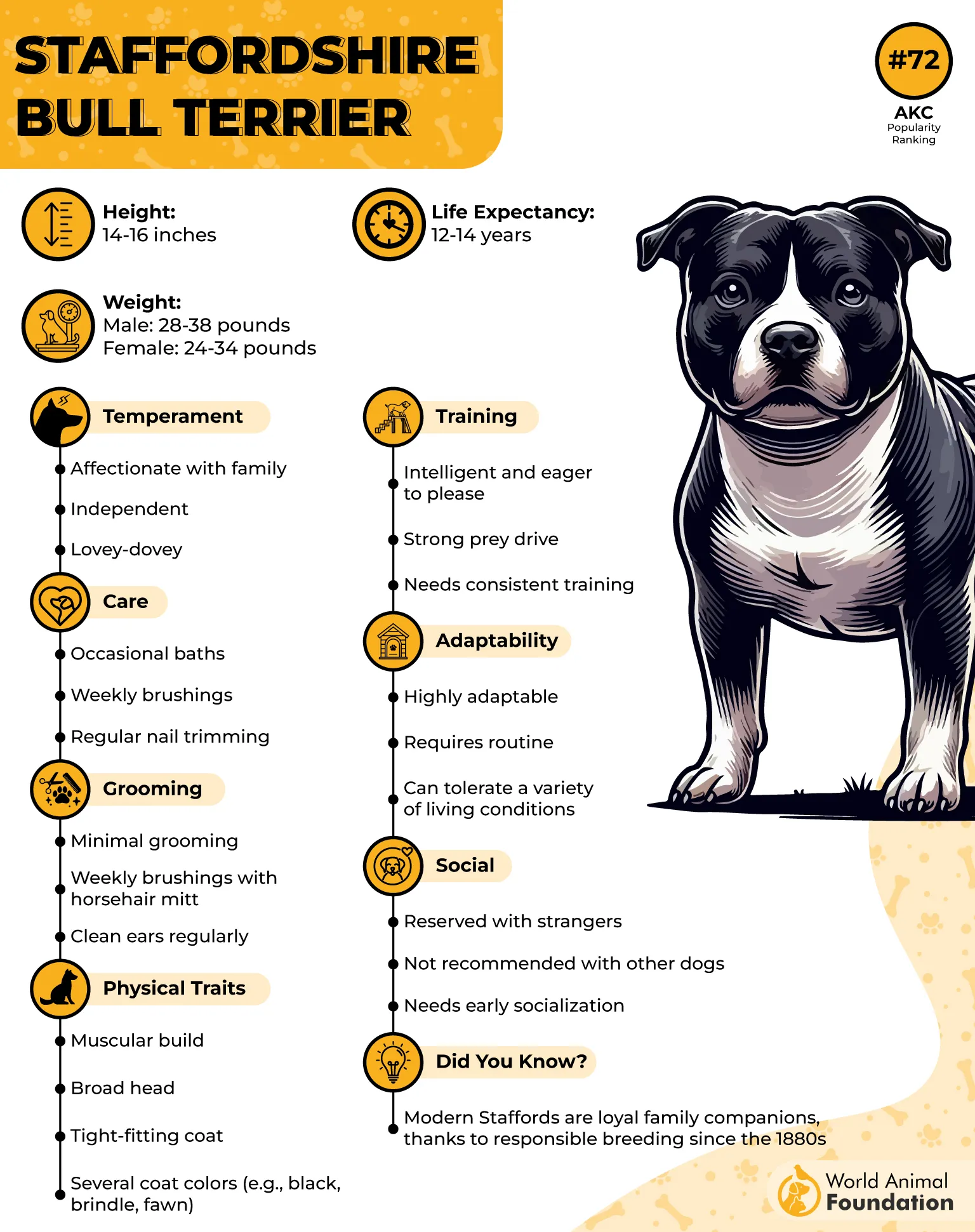
Owners should focus on consistent commands, early exposure to various dog breeds, and positive reinforcement to guide their Staffy toward appropriate behavior. Supervised interactions, especially in off-leash situations, are highly recommended. Their strength and energy make it essential to manage play sessions wisely.
Though not naturally aggressive, they are confident and can become reactive in high-stimulation environments. At home, many Staffies coexist peacefully with a well-matched sibling or familiar dog friend. Their devotion to their humans is unmatched, and with effort, their canine manners can be excellent, too.
Why they’re moderately good with other dogs
They can be friendly but require structured introductions, especially when around unfamiliar or assertive dogs.
2. Collie
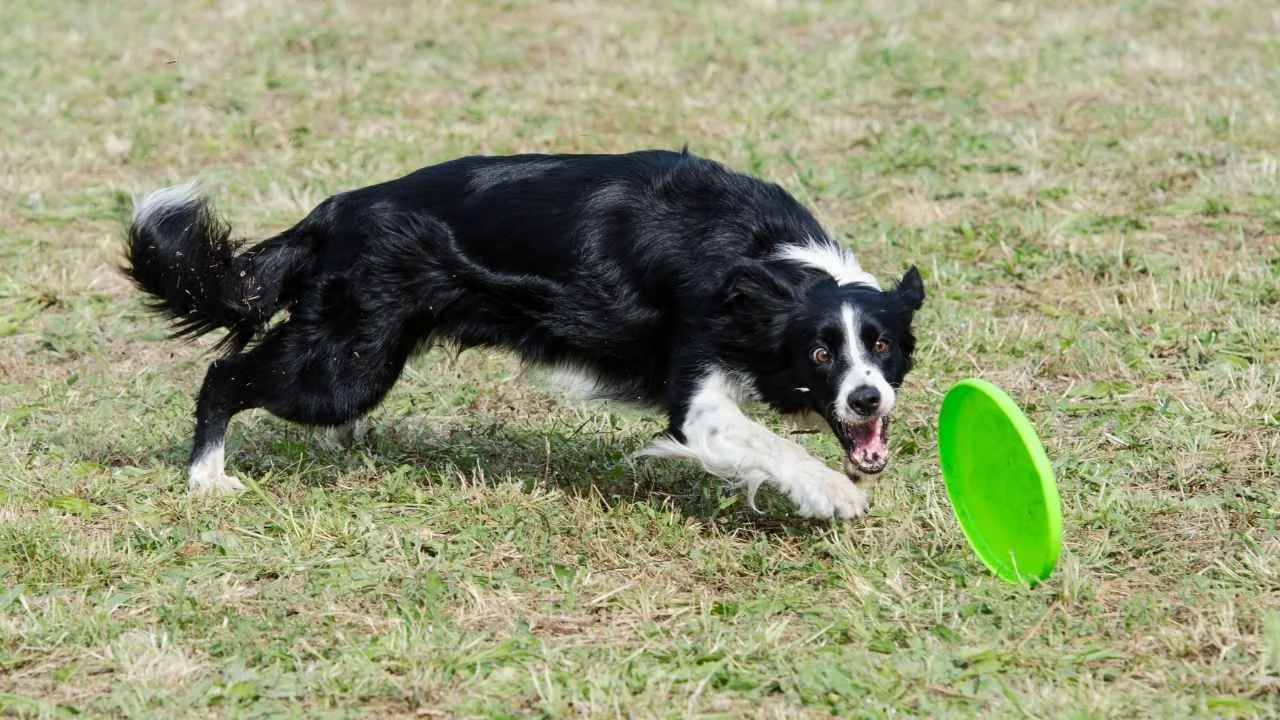
Collies, especially the Rough and Smooth varieties, are known for their intelligence and gentleness. With a long history as herding dogs, they’re hardwired to watch over and work cooperatively within a group. These instincts translate well to multi-dog households, but their sensitivity makes them a bit selective.
Generally friendly and respectful, Collies are unlikely to initiate conflict with other dogs. However, they may withdraw or become overwhelmed if faced with hyperactive or overly dominant companions. Their mild-mannered temperament is better suited to dogs with similarly calm dispositions.

With socialization, Collies can develop excellent dog-to-dog communication skills. They’re not the most playful breed, but they’ll often engage in light-hearted interaction, especially if they know and trust the other dog. Training tends to be easy thanks to their eagerness to please and emotional awareness.
Collies are incredibly devoted to their families and will often seek human reassurance in group settings. This makes them a good choice for owners willing to guide social interactions and create safe, predictable environments. They thrive in homes with thoughtful structure and gentle reinforcement.
Why they’re moderately good with other dogs
Their calm nature makes them respectful companions, though they may prefer quiet, familiar dogs over boisterous company.
3. Bulldog
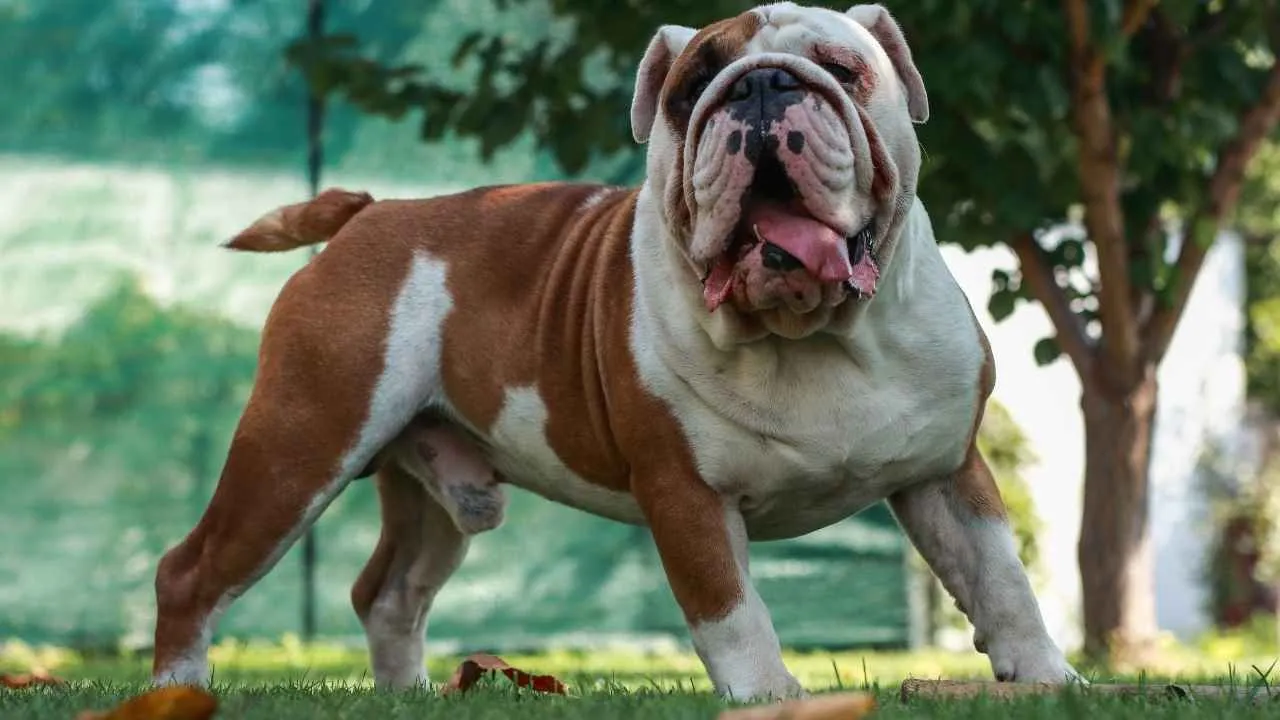
Bulldogs have a distinctive presence—low to the ground, full of muscle, and armed with a calm, no-nonsense demeanor. They’re not naturally aggressive, but their laid-back attitude means they may simply ignore other dogs unless properly engaged. They’re more about comfort than chaos.
While Bulldogs can coexist peacefully with other dogs, they tend to avoid high-energy play. This can cause some friction with excitable or dominant breeds who expect enthusiastic interaction. Still, with proper introductions and a calm companion, Bulldogs are usually unbothered and indifferent.
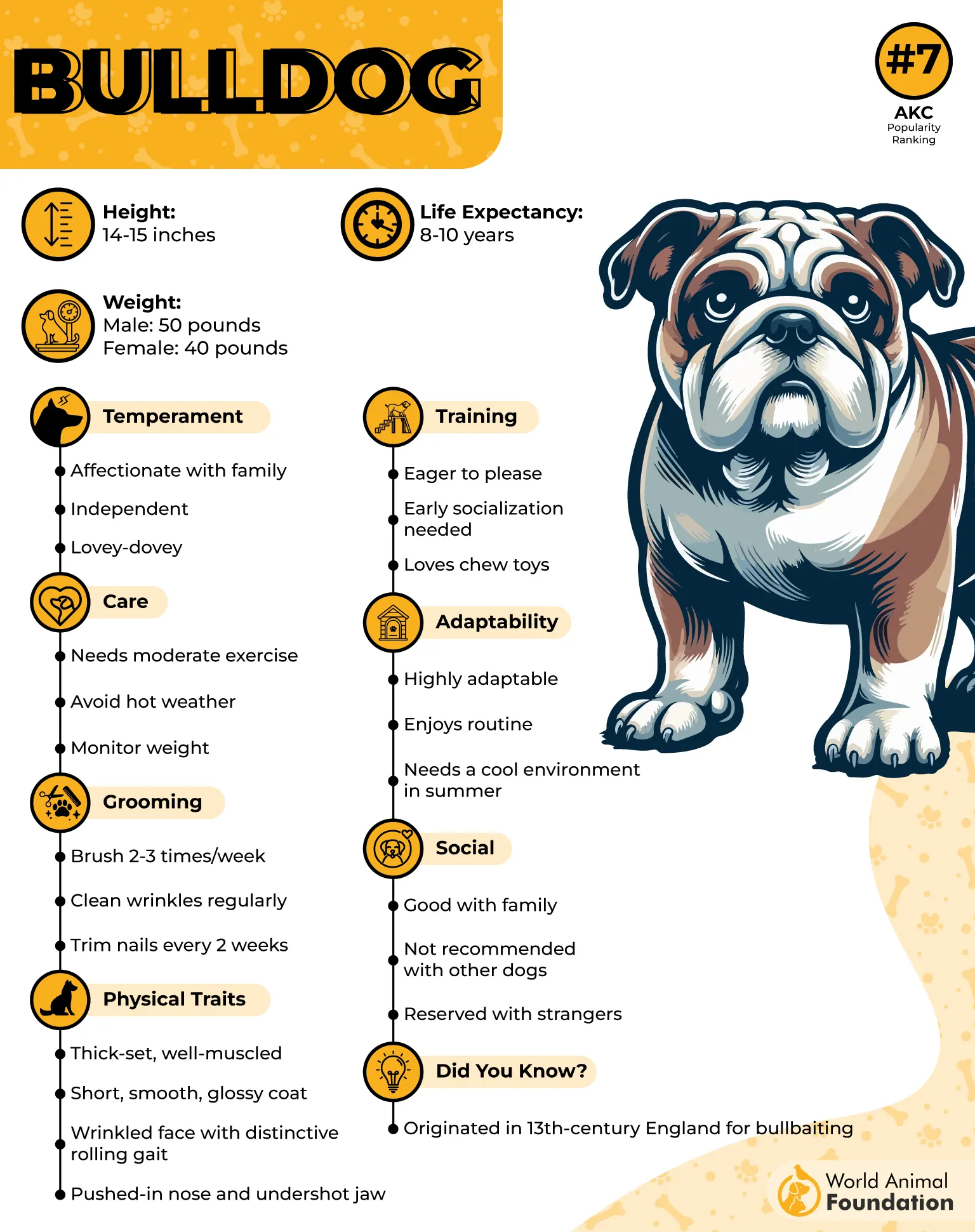
They’re generally content sharing space with other animals as long as there’s no competition for food or affection. Bulldogs prefer familiarity and benefit from consistent routines and low-stress environments. A compatible canine housemate is usually one who respects their personal bubble.
Exercise requirements are low, but Bulldogs do enjoy short walks and sniffing around the yard. During these moments, they may show surprising curiosity toward other dogs, but in a quiet, measured way. Their personalities shine when they feel safe, and they’re rarely the cause of tension.
Why they’re moderately good with other dogs
Their peaceful disposition can lead to harmony, though they’re best matched with equally relaxed canine companions.
4. Pembroke Welsh Corgi
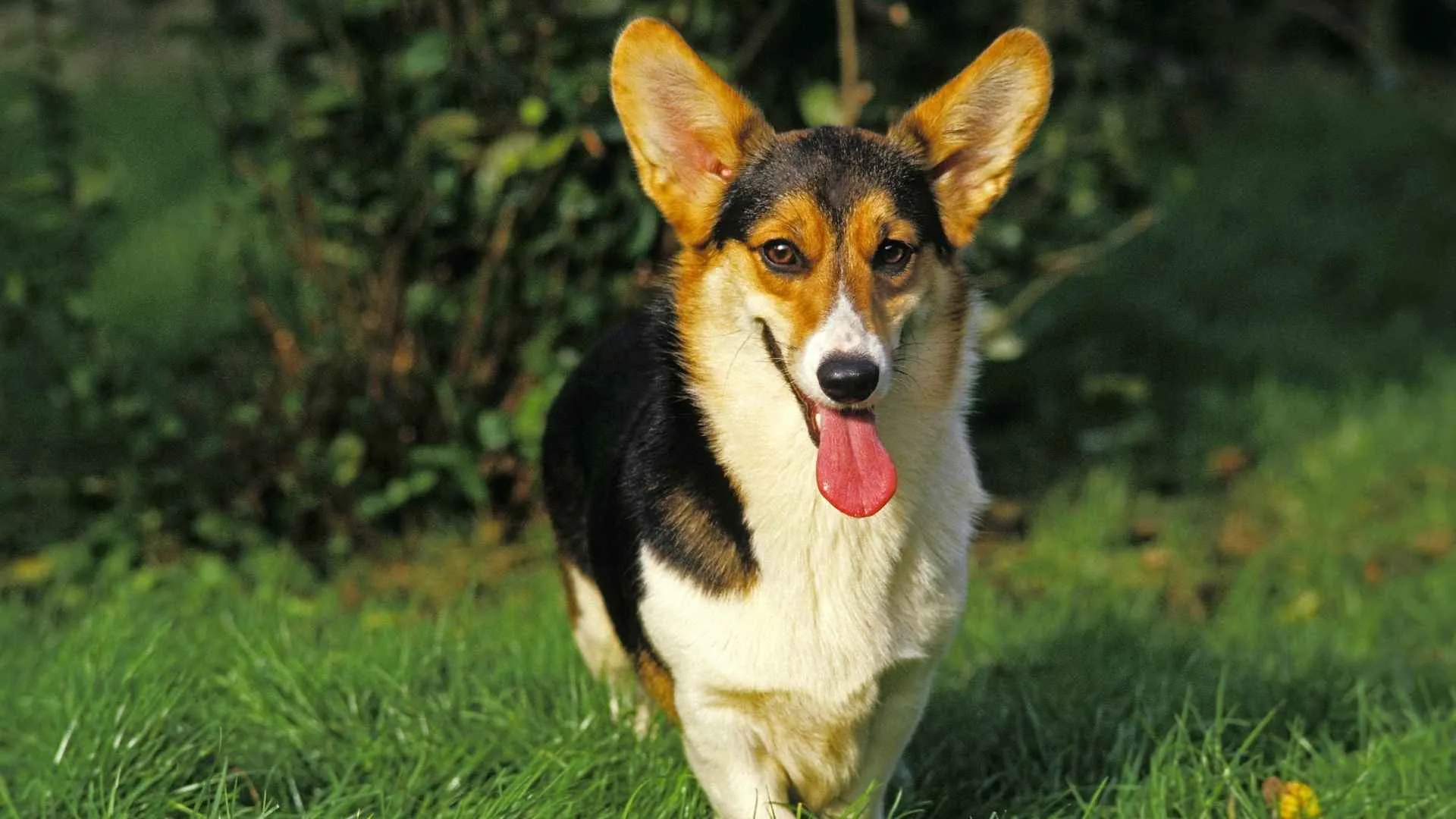
The Pembroke Welsh Corgis are spirited, energetic dogs originally bred for herding cattle. Their natural assertiveness and energy give them confidence in social settings, but their herding instincts can occasionally lead to bossy or controlling behavior around other dogs. With the right guidance, though, they’re often up for making friends.
As per PetMD, Corgis are generally outgoing and enjoy playtime, especially with dogs of similar size or activity level. However, they don’t always appreciate being pushed around and can be vocal if they feel slighted. That said, they usually respond well to clear structure and strong leadership from their humans.
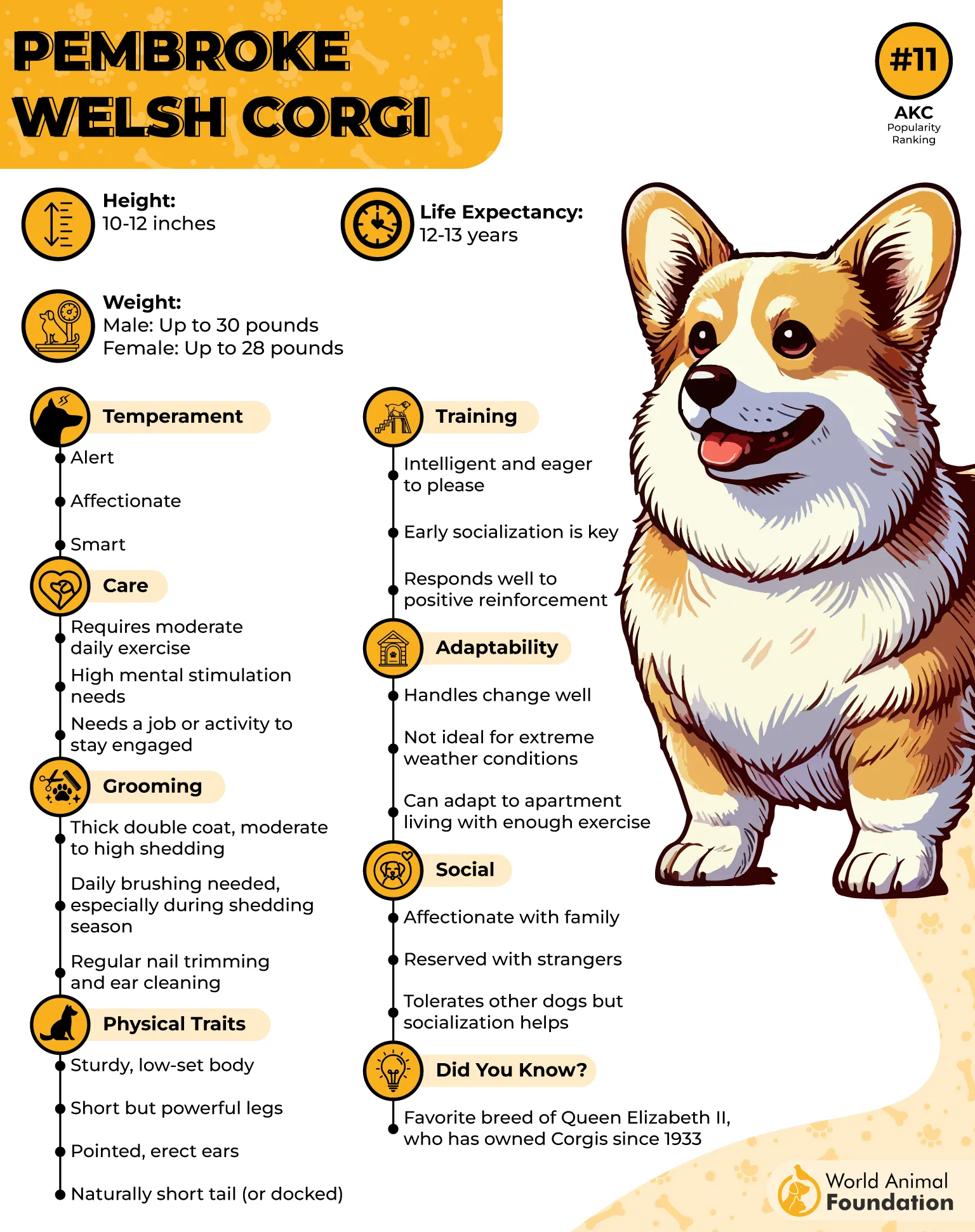
In multi-dog homes, Corgis often take on the “manager” role—sometimes amusing, sometimes exasperating. They do well with dogs who won’t challenge their position, particularly those who are gentle or tolerant. Supervised playdates and slow introductions help curb any tendency toward possessiveness.
Despite their bold attitude, Corgis are deeply affectionate and loyal. They enjoy companionship and will often follow other dogs from room to room out of curiosity and social interest. Their adaptability makes them a favorite in diverse households.
Why they’re moderately good with other dogs
They’re sociable but may assert dominance, especially without structured interactions or clear boundaries.
5. Pug
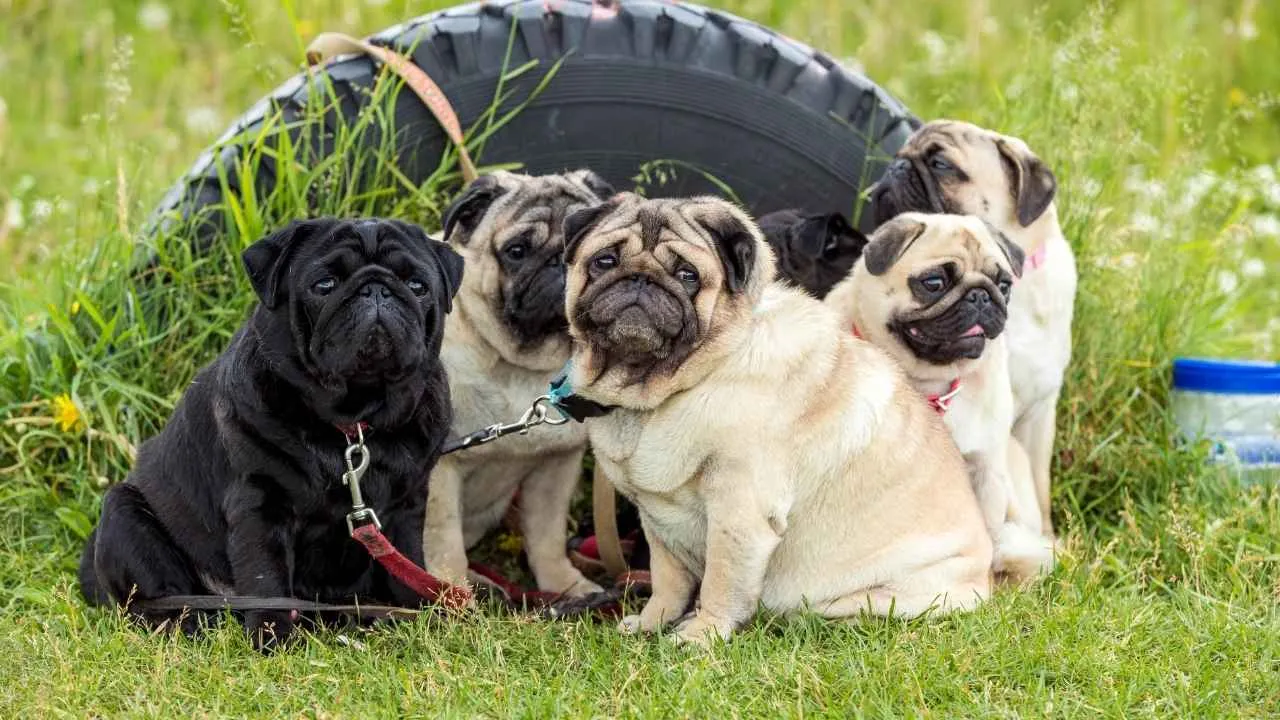
Pugs are charming little dogs full of personality and mischief. With roots in Chinese royalty, they’ve spent centuries perfecting the art of companionship. While they generally enjoy the company of other dogs, they also have a jealous streak and may compete for attention.
These dogs are playful and comical, which helps break the ice in new social situations. They usually get along with similarly sized breeds or with easygoing personalities. However, due to their strong bond with their owners, they can become possessive in some settings.
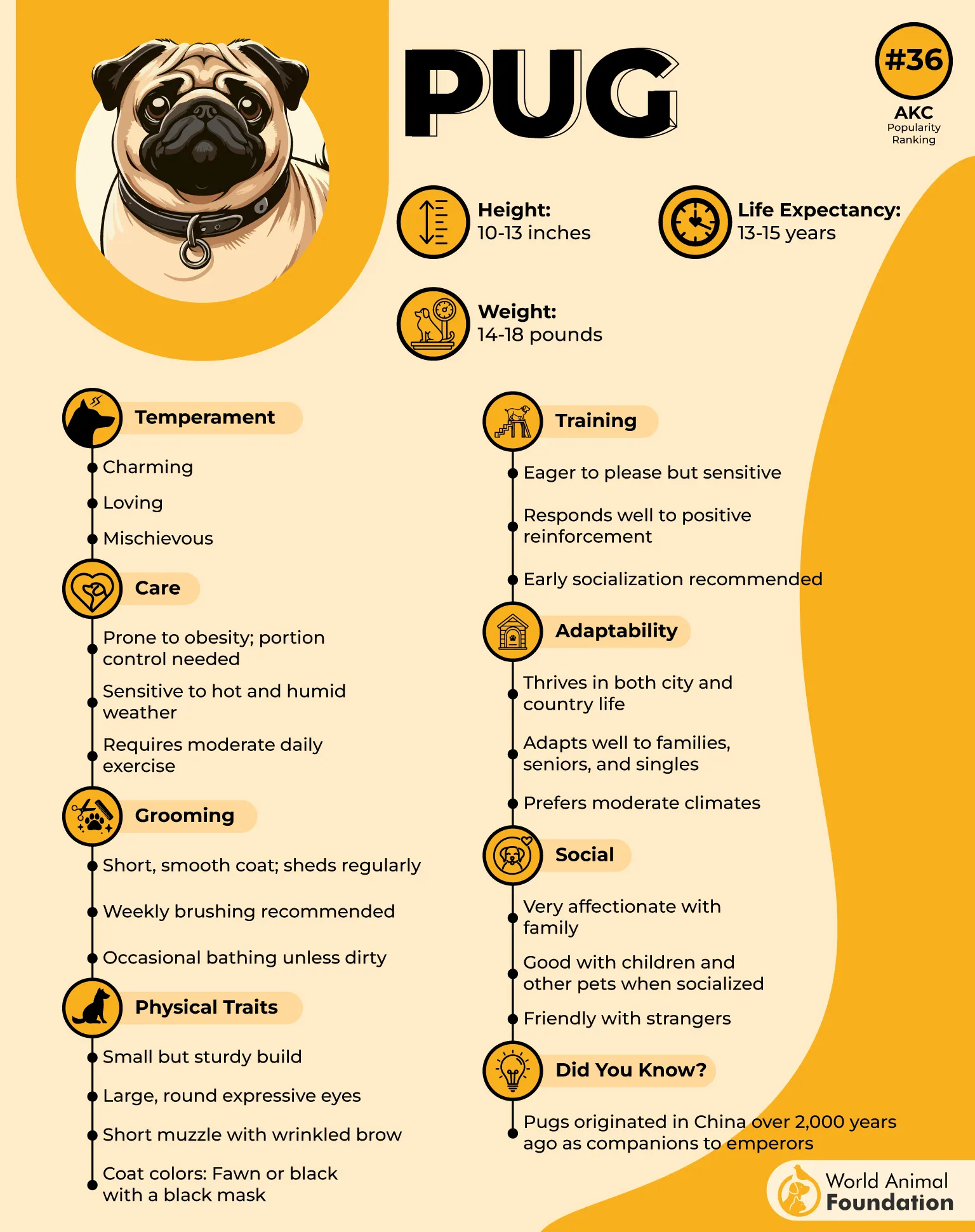
Training and positive exposure to other dogs from a young age helps mitigate this behavior. Pugs don’t usually seek out conflict, but they also won’t hesitate to grumble if they feel slighted. That said, their small size and sunny disposition make serious aggression unlikely.
They thrive in cozy environments and appreciate a predictable routine. Group walks, doggy meetups, and casual interaction are all enjoyable for them when done at their own pace. Overall, their friendliness shines through in most encounters.
Why they’re moderately good with other dogs
They enjoy socializing but can become clingy or competitive without balanced attention and training.
6. Boxer
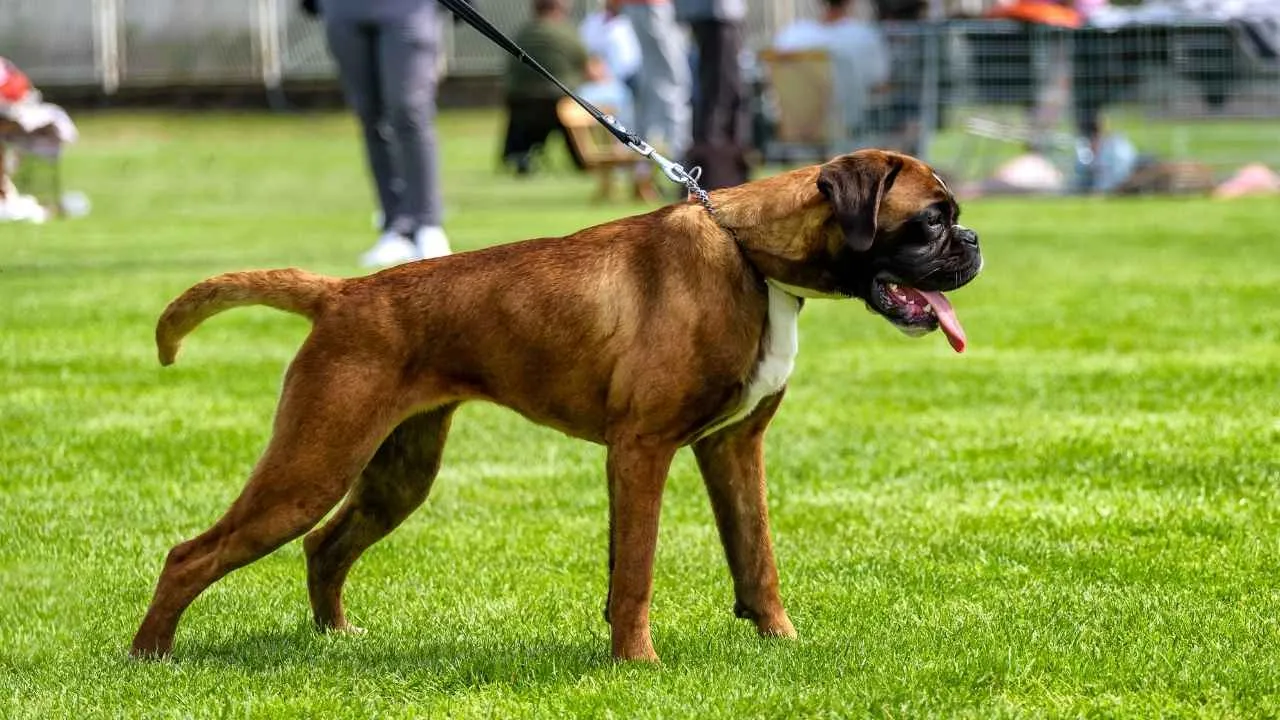
Boxers are high-energy athletes with expressive faces and a genuine love for life. They’re known for their boundless enthusiasm and goofy antics, which can either charm or overwhelm other dogs. Social but strong-willed, they benefit from guidance in group settings.
When raised around other dogs, Boxers often form close bonds and enjoy active play. However, their boisterous energy and physical style of interaction can be too much for shy or small dogs. This means compatibility often depends on the temperament of their canine counterparts.
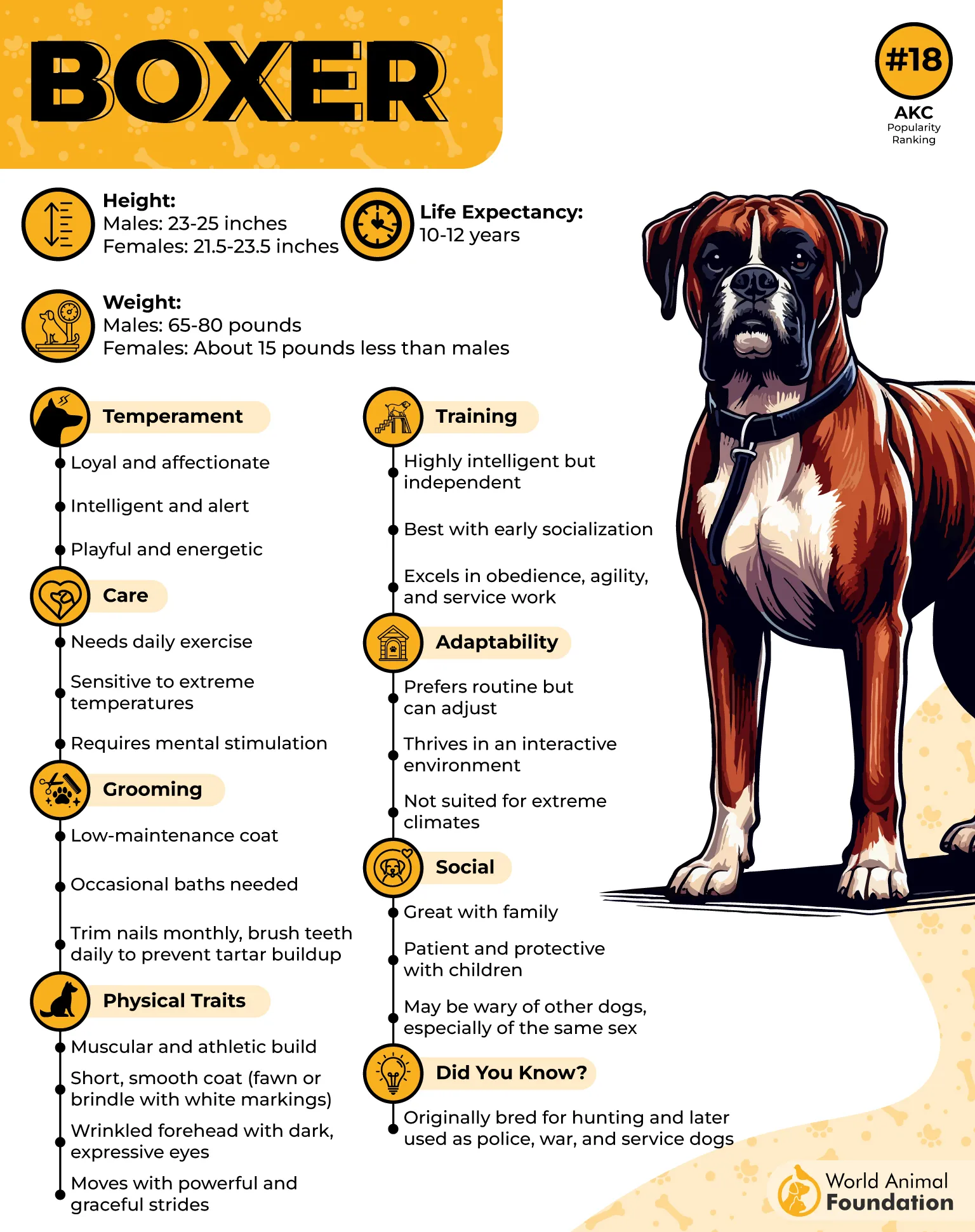
Boxers are emotionally attuned to their humans and often look for cues when navigating group dynamics. With positive reinforcement and firm training, they can become reliable and respectful playmates. Their intelligence and eagerness to learn work in their favor.
They need plenty of exercise and mental stimulation, which also helps reduce frustration and overexcitement. Dog parks and playgroups can be great outlets, so long as their social skills are well-developed. In the right environment, Boxers are loyal friends to both people and pups.
Why they’re moderately good with other dogs
Their playful nature makes them sociable, but their energy needs structure to avoid overwhelming other pets.
7. Havanese
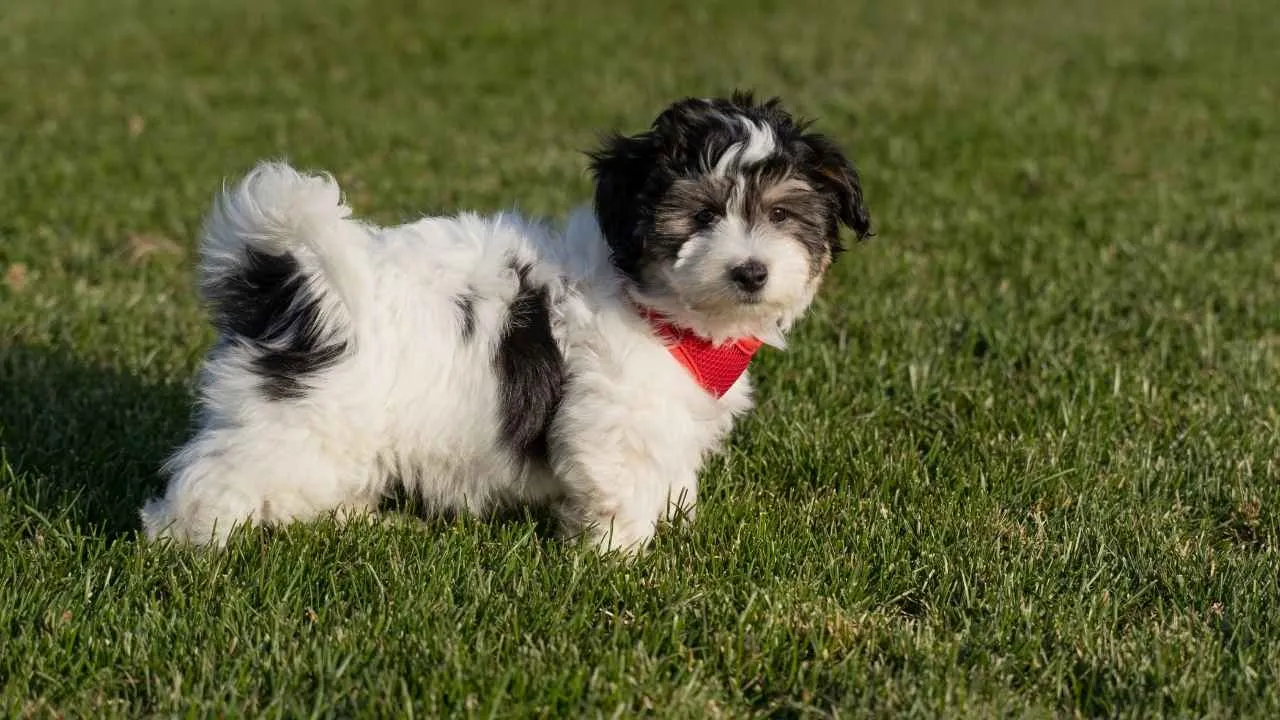
As per Purina, the Havanese is a small companion breed from Cuba known for its cheerful demeanor and strong attachment to its family. These dogs are naturally friendly and enjoy being part of a group, including with other dogs. However, they can be timid or reactive if startled by rough play or dominant behavior.
Havanese tend to thrive in environments where introductions are slow and respectful. They’re incredibly social with humans, and that warmth often extends to other pets, especially if raised together. Because of their size and sensitivity, it’s important to avoid pairing them with aggressive or overly energetic breeds.

They communicate well using body language and are usually quick to adjust if given time. Havanese enjoy following dogs around, mimicking their behavior, and joining in light-hearted games. Their emotional intelligence is one of their best traits.
Training is straightforward, and their desire to please makes redirection easy when needed. Consistency, patience, and positive experiences shape them into confident, balanced companions. With proper socialization, they make delightful additions to multi-dog homes.
Why they’re moderately good with other dogs
They’re friendly by nature but require a gentle, well-paced approach to build lasting canine bonds.
Conclusion
Not every dog is born a social butterfly. While some breeds eagerly engage with any pup they meet, others need time, structure, and proper introductions to build positive relationships. If you’re considering bringing a second dog into your home or choosing a breed that might share space with others, it’s essential to understand which dogs are moderately good with other dogs.
Many of the most popular dog breeds, including Labrador Retrievers, Golden Retrievers, and Boston Terriers, are known for their charm, but not every dog is instantly social with other canines. These breeds, along with the Irish Setter and Boxer, fall into the category of being moderately good with other dogs, capable of friendship with the right socialization and structure.
For an active family, choosing an active breed that enjoys moderate exercise and even excels in dog sports can be a great match. A playful dog like the Boston Terrier or an affectionate breed like the Golden Retriever brings joy and connection without constant supervision.
The American Kennel Club often highlights these breeds as ideal family dogs, combining loyalty, intelligence, and trainability. In the right home, these dogs don’t just get along—they shine. With love, patience, and purpose, they become truly excellent family dogs.


